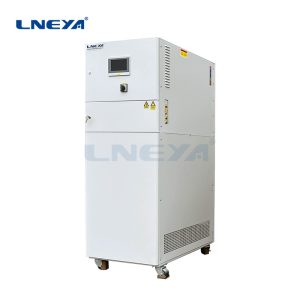The importance of temperature control for cannabis plant processing
The legalization of industrial hemp in Europe, America and other countries has increased the demand for equipment for hemp processing. Cannabis eventually comes in the form of CBD extract. In order to convert the plant into a concentrate for medicines and supplements, the factory must carefully control the temperature during the extraction and distillation process.
Temperature control CBD extraction process
Extraction separates the “crude” oil containing cannabinoids from the rest of the plant. The choice of extracting oil from hemp. They (supercritical fluids, solvents or alcohols) to dissolve cannabinoid compounds in plants. These methods all rely on precise temperature control during the process. In any step, too much heat will cause cannabinoids to be lost due to oxidation.

Cannabinoids are easily dissolved in supercritical CO2 and settle at the bottom of the tank. After the extraction is complete, the operator recycles the carbon dioxide for reuse and turns on the switch to recover “crude oil” while leaving undissolved plant residues in the tank. Vegetable fats and other unwanted compounds can be removed by treatments such as winterization.
The use of hydrocarbons to extract CBD from hemp is a process that uses pressure and heat to condense and evaporate solvents. In order to obtain the desired liquid or gaseous state, the solvent (such as butane) may need to be as low as -79°C to remain liquid, but may rise to 49°C in the gaseous state. Maintaining the temperature control of the solvent will ensure that it remains in the desired state to extract the cannabinoid compounds from the cannabis as much as possible. Just like supercritical CO2 extraction, the resulting “crude oil” also requires further processing to remove undesirable substances such as vegetable waxes and lipids.
The alcohol extraction method is to mix hemp biomass (flowers or whole plants) with ethanol and a container that has been cooled to -30°C or lower, and keep it at this temperature until the cannabinoids are dissolved in the solution. The length of time depends on the temperature of the ethanol and the characteristics of the cannabis plant, and it may take from 30 minutes to several hours.
The producer must be careful to maintain the ideal temperature to prevent degradation of the CBD in the extract. Before distilling the extract, hemp oil remains rough and contains 20% to 60% cannabinoids. Winterization removes wax, fat and other unwanted components, while refining and distillation yields substances that contain only the required compounds. The form of extraction depends on the extraction method completed.

In order to prevent the degradation of the extract and maintain the purity of the final CBD, an appropriate temperature must be maintained throughout the processing of hemp. Whether it’s freezing hemp immediately after harvest or looking for a way to keep ethanol cold for extraction, manufacturers must use equipment with precise temperature control. LNEYA has a design temperature control unit with a temperature range of -150°C~-5°C, using automatic cascade refrigeration mode and mixed refrigerant. They can be transported by truck, rail or cargo ship to almost any destination in the world. For more information, please contact us.
(Most of the content comes from the Internet, you can contact us to delete if you have any questions!)
Related recommendations
-
cryogenic chillers for drugs flow chemistry processes
1317Low temperature chillers used in drug flow chemistry (continuous manufacturing) processes are one of the key equipment to ensure that reactions occur under precise temperature conditions. Flow Chemistry is a continuous manufacturing techno...
View details -
General high and low temperature integrated machine valve repair detailed description
2116The conventional high and low temperature integrated machine valve replaces the packing, and the main function of the packing is to prevent the working medium from leaking along the axial direction of the valve stem. In case of minor leakage, the ...
View details -
Daily Maintenance of Low Temperature Freezer
1431Low temperature freezer, which is also called industrial refrigerator, is mainly used for industrial cold treatment, the increase of wear-resisting property and friction of metals. Guanya Refrigeration Technology Co., Ltd in Wuxi is a leading role...
View details -
 LNEYA Industrial Chillers Manufacturer Supplier
LNEYA Industrial Chillers Manufacturer Supplier












